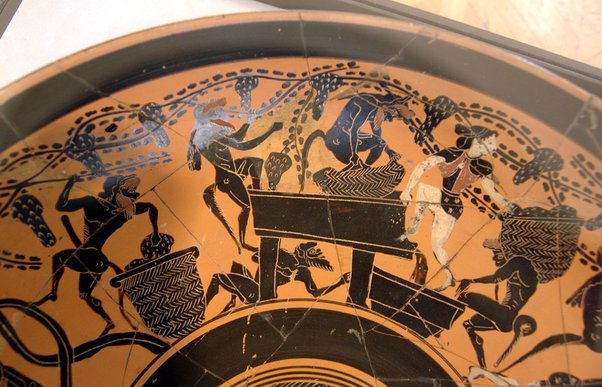
In much of the Greek and Roman Mediterranean, wine was the beverage of choice across social strata, a key source of carbohydrates, and was used in medicine, religion and cooking. Olive oil was used for fuel in cooking, lighting and heating, personal hygiene (soap), craft and agriculture and within the kitchen. Grain was central to foodways, economies, and politics including the satisfaction of the people with the elite. These commodities therefore provide a key lens through which we can engage with diversity in source material, apply a variety of research methods, and explore the lived experience of a wide range of people in the ancient Graeco-Roman Mediterranean – from elite banquets to the slaves and free workers that operated production facilities and staffed warehouses, to the townspeople buying food and drink at the local taberna.
This module examines the production, movement and manifold uses of these commodities from the Iron Age and Classical Greek and Roman eras through Late Antiquity. Students will learn how wine, oil and grain shaped (and continue to shape) the physical, cultural and economic landscapes of the Mediterranean by combining archaeological and artistic evidence with historical sources and an assortment of modern scientific data.
The module will be divided into thematic components, with seminars surveying various forms of evidence for wine, olive oil and grain in Graeco-Roman antiquity providing a foundation for more detailed student-led case study exploration. These might include the archaeological and historical study of warehouses in Rome and Ostia; intramural vineyards, groves and tabernae at Pompeii and Herculaneum; dense clusters of production sites in villages of the Levant and North Africa; representations of these commodities, their uses and production in art and religious contexts (e.g., Santa Costanza, Rome; coins; household altars; mosaics of mensores frumentarii, Ostia); Pompeiian graffiti of daily shopping lists and purchases made; descriptions by ancient sources on the production and use of these commodities (e.g., Pliny the Elder, Columella, Varro); and modern experimental archaeology that seeks to recreate tastes and flavours of ancient food and drink. Opportunities will be provided for engagement with relevant material culture at nearby museums and institutes in London with rich collections related to the themes of the module (e.g., British Museum; ICS Ehrenberg Collection).
